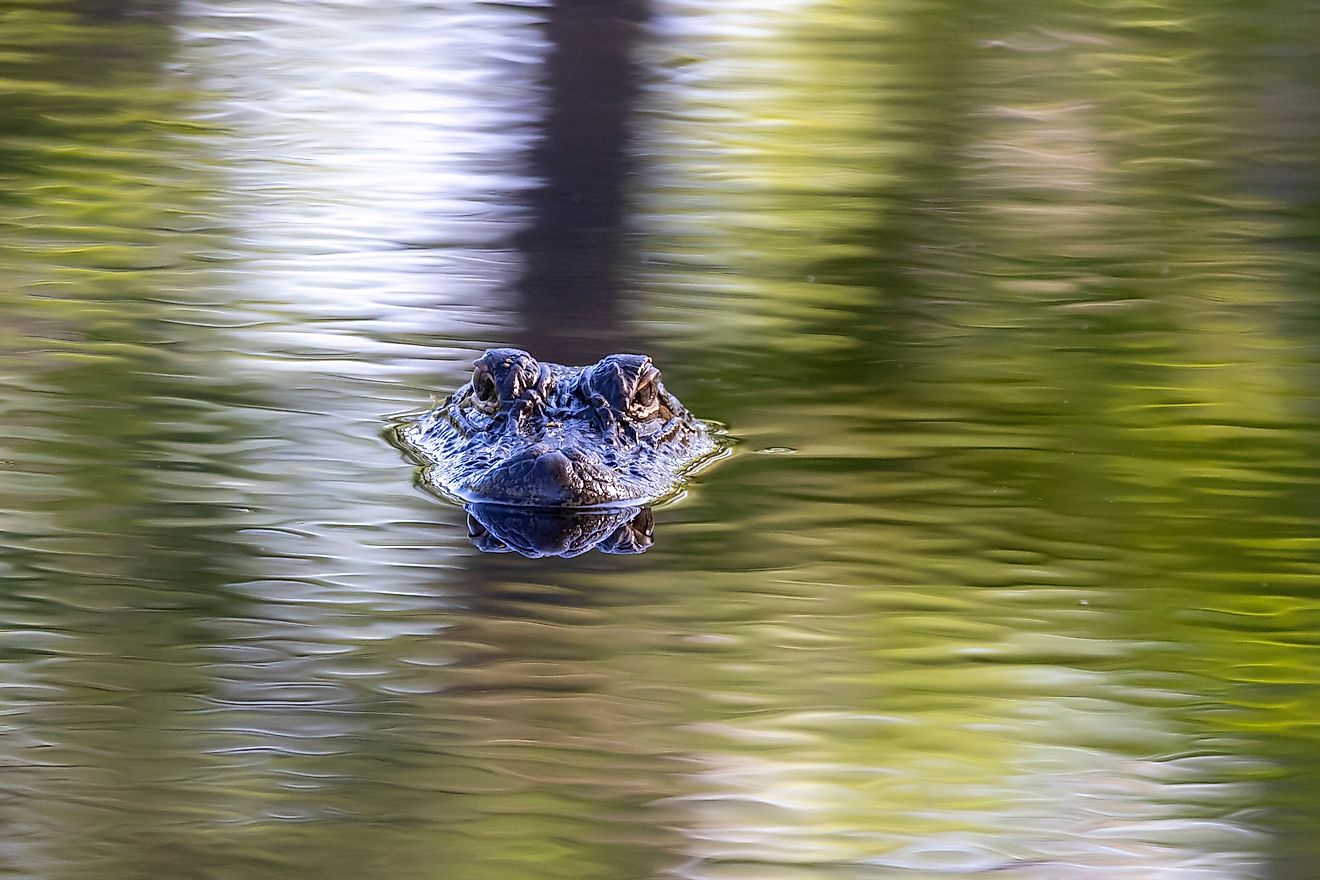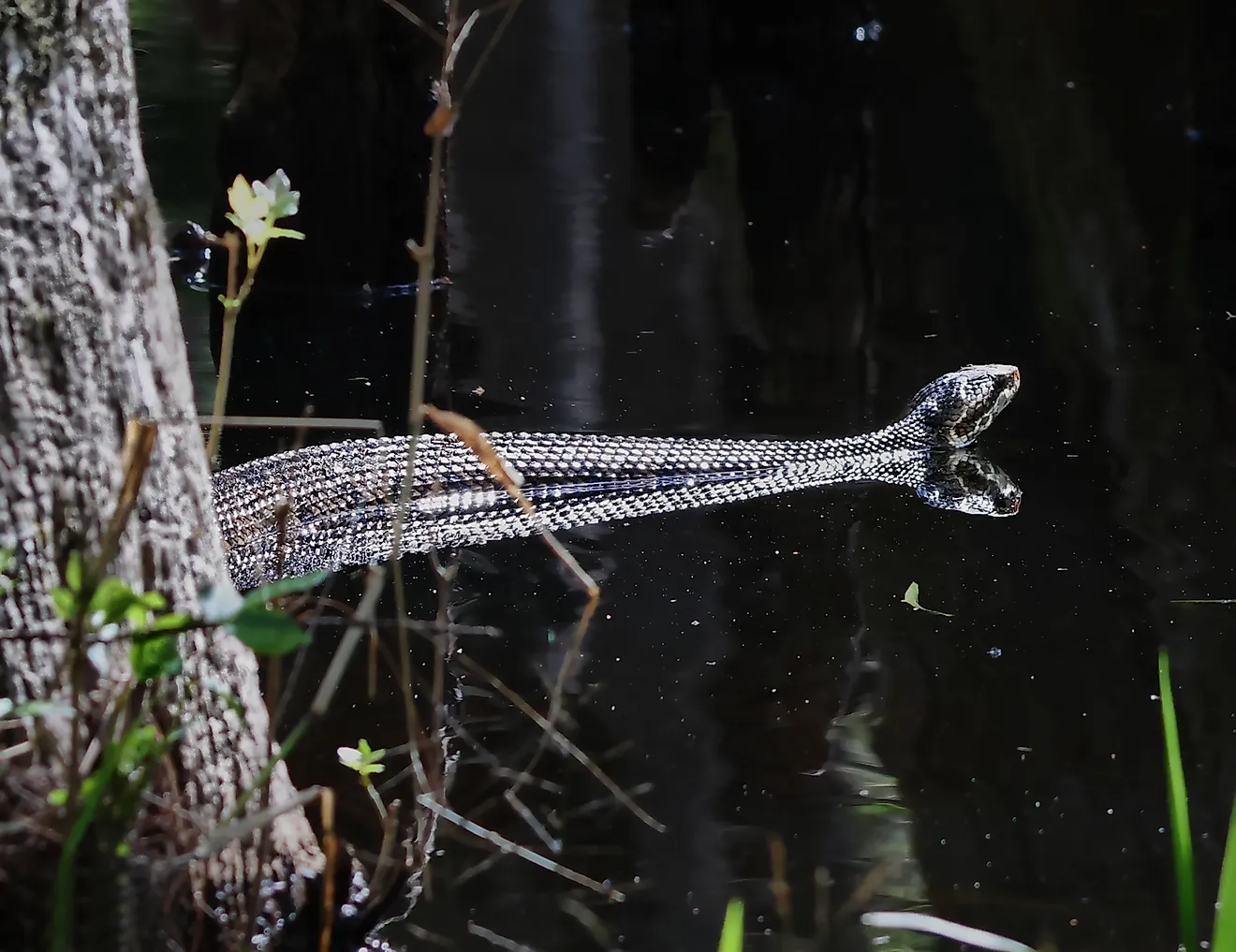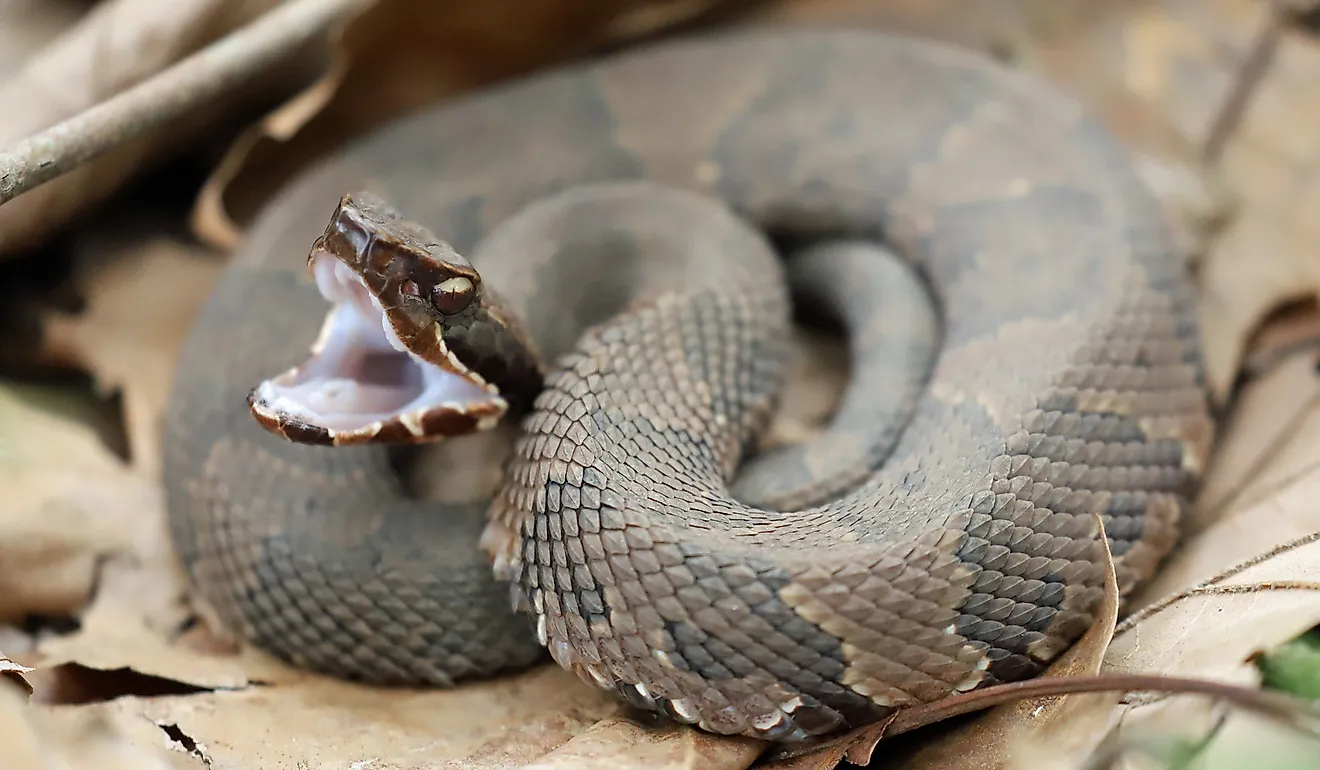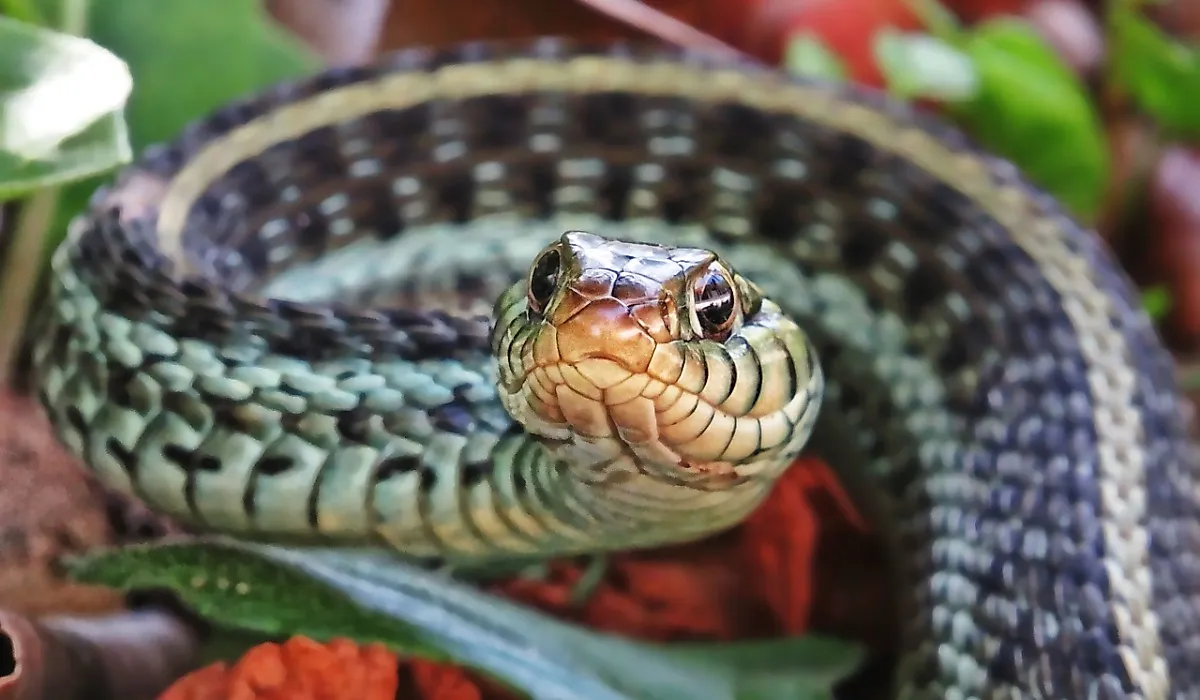
4 Of The Most Snake Infested Rivers In Michigan
Michigan may be best known for bordering four out of five of the Great Lakes and the abundance of outdoor recreation that comes with them, however it also has many inland lakes, swamps, wetlands, and 51,438 miles of river flowing through it. All this water in the state, specifically the rivers, are home to an array of wildlife, including a handful of the state’s 18 species of snakes. Let’s take a look at the most snake infested rivers in Michigan.
Au Sable River

The Au Sable River runs approximately 130 miles through the northern Lower Peninsula, through the towns of Grayling and Mio before entering Lake Huron at Oscoda. The river drains an area encompassing 1,932 square miles, with its watershed covering parts of eight different counties. It is known for its high-water quality, scenery, and supporting a wide range of wildlife, including snakes.
Among the snakes occupying the Au Sable River basin is the states only venomous snake, the Massassauga Rattlesnake (Sistrurus catenatus catenatus). They typically occupy a variety of wetland habitats, including bogs, fens, shrub swamps, wet meadows, marshes, moist grasslands, wet prairies, and floodplain forests, migrating upland to drier sites in the summer months. Their population declining due to fragmentation and loss of wetland habitat paired with their characteristically shy demeanor makes them a rare encounter.
On the other hand, the Northern Watersnake (Nerodia sipedon sipedon) is abundant in population and is commonly seen in and around permanent bodies of water such as rivers, streams, sloughs, lakes, ponds, bogs, marshes, and swamps. They favor open, sunny areas with available cover and basking sites.
Muskegon River
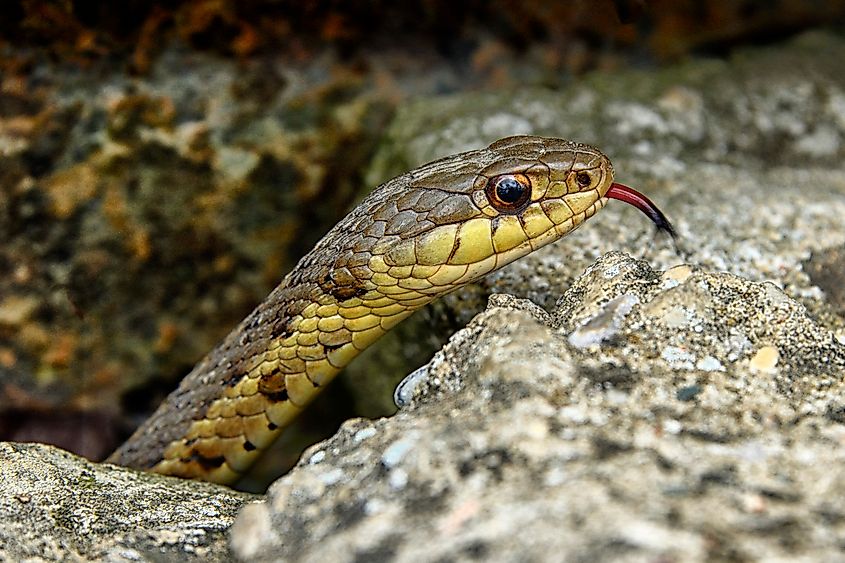
The Muskegon River originates in Higgins and Houghton Lakes and is the second longest river in Michigan. It flows 219 miles to its confluence with Muskegon Lake and drains 2,725 square miles of watershed. The Muskegon River flows through the Muskegon Lake Nature Preserve which is a large block of public land dedicated to wildlife management, and provides habitat for many species of animals, including snakes.
The Eastern Garter Snake (Thamnophis sirtalis sirtalis) is found in the Muskegon Lake Nature Preserve. It inhabits a wide range of habitats, but prefers moist grassy areas near ponds, lakes, ditches, or stream edges. However they can also be found in urban areas like backyards. They are a nonvenomous, generally harmless snake that may omit a foul smelling odor if threatened or captured.
Huron River
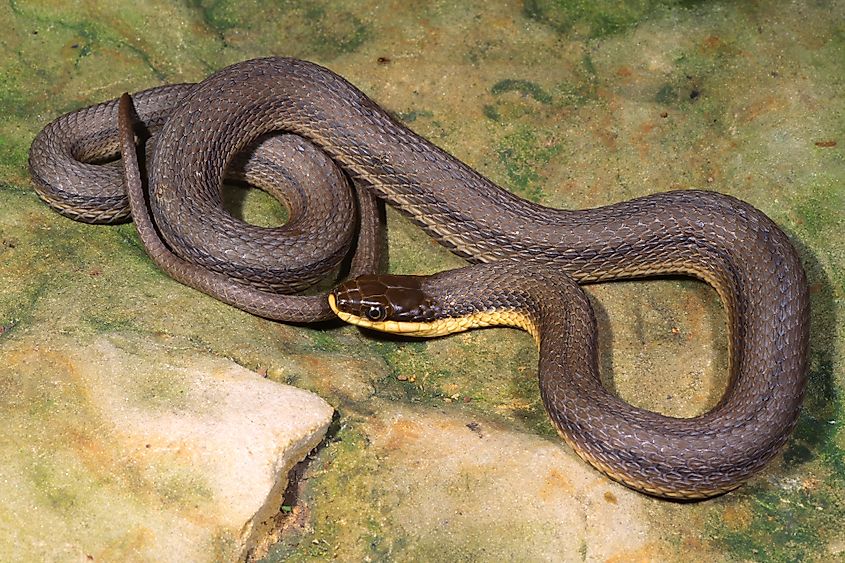
The Huron River originates in southeast Michigan in Springfield Township near Big Lake, flowing roughly 125 miles through a variety of landscapes ranging from densely wooded banks to current and former mill sites and mill dam impoundments. It flows through several villages before opening up into farmland and finally emptying into Lake Huron.
Queen Snakes (Regina septemvittata) are uncommon in Michigan but have been observed in the Huron River watershed. These snake prefer shallow warm streams that are rocky-bottomed and inhabited by crayfish, their primary food source. They have also been known to occupy ponds, lakes, marshes, ditches, and canal edges. They normally avoid completely shaded sites but will inhabit areas with open to moderately closed canopy.
Detroit River

The Detroit River forms part of the boundary between Michigan and the Canadian province of Ontario. It is also responsible for connecting Lake St. Clair with Lake Erie. The river flows south for 32 miles between Detroit and Windsor. Subsequently, the river is heavily used for both leisurely sailing and shipping.
The Eastern Fox Snake (Pantherophis gloydi) is a rare species in Michigan with a threatened population status. They primarily inhabit emergent wetlands and marshes of the Detroit River that are filled with herbaceous vegetation. However, they have been known to frequent drier areas such as vegetated dunes, beaches, and woodlands. They are also strong swimmers, competent at swimming long distances offshore in between other islands along the river and lakes they inhabit.
Rivers Alive with Snakes
Michigan may have a lot of native snake species, but most of them are harmless and nonvenomous. The state’s only venomous species is also declining in population due to habitat loss, making encounters rare. Any snake that does come into contact with humans would rather flee from them than engage with them. Besides, the presence of snakes in Michigan’s rivers are indicators of a healthy ecosystem and strong water quality.


